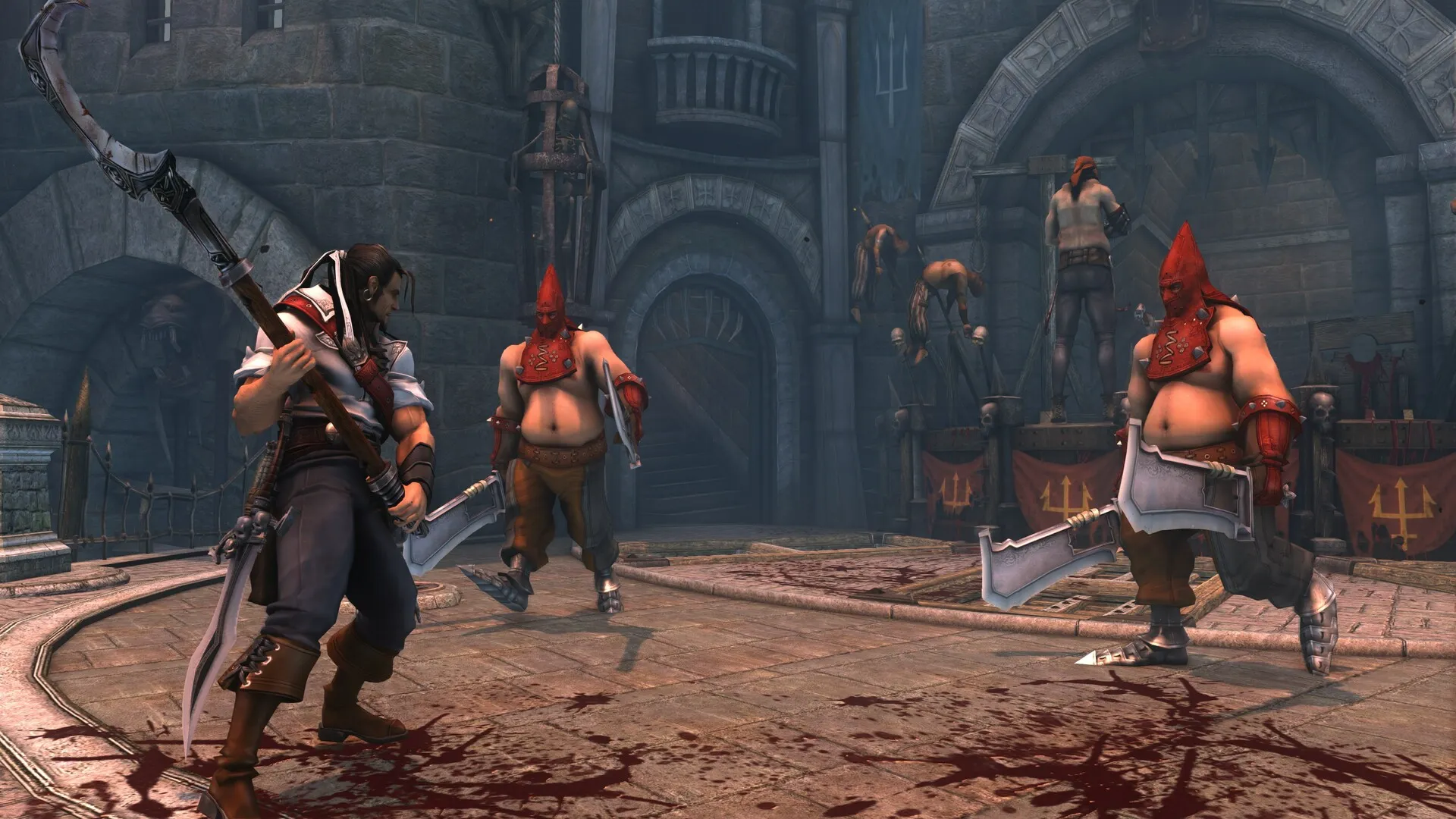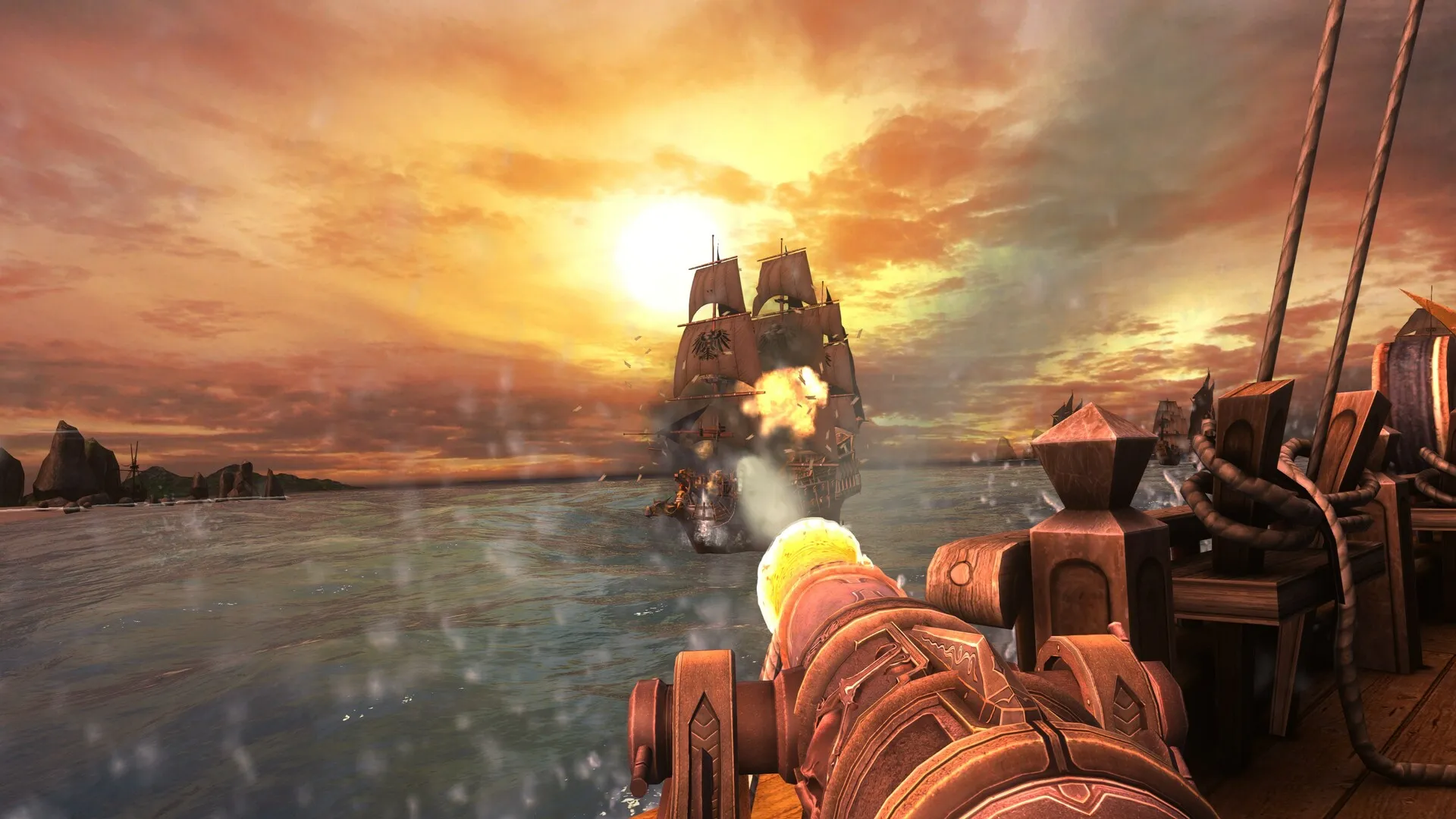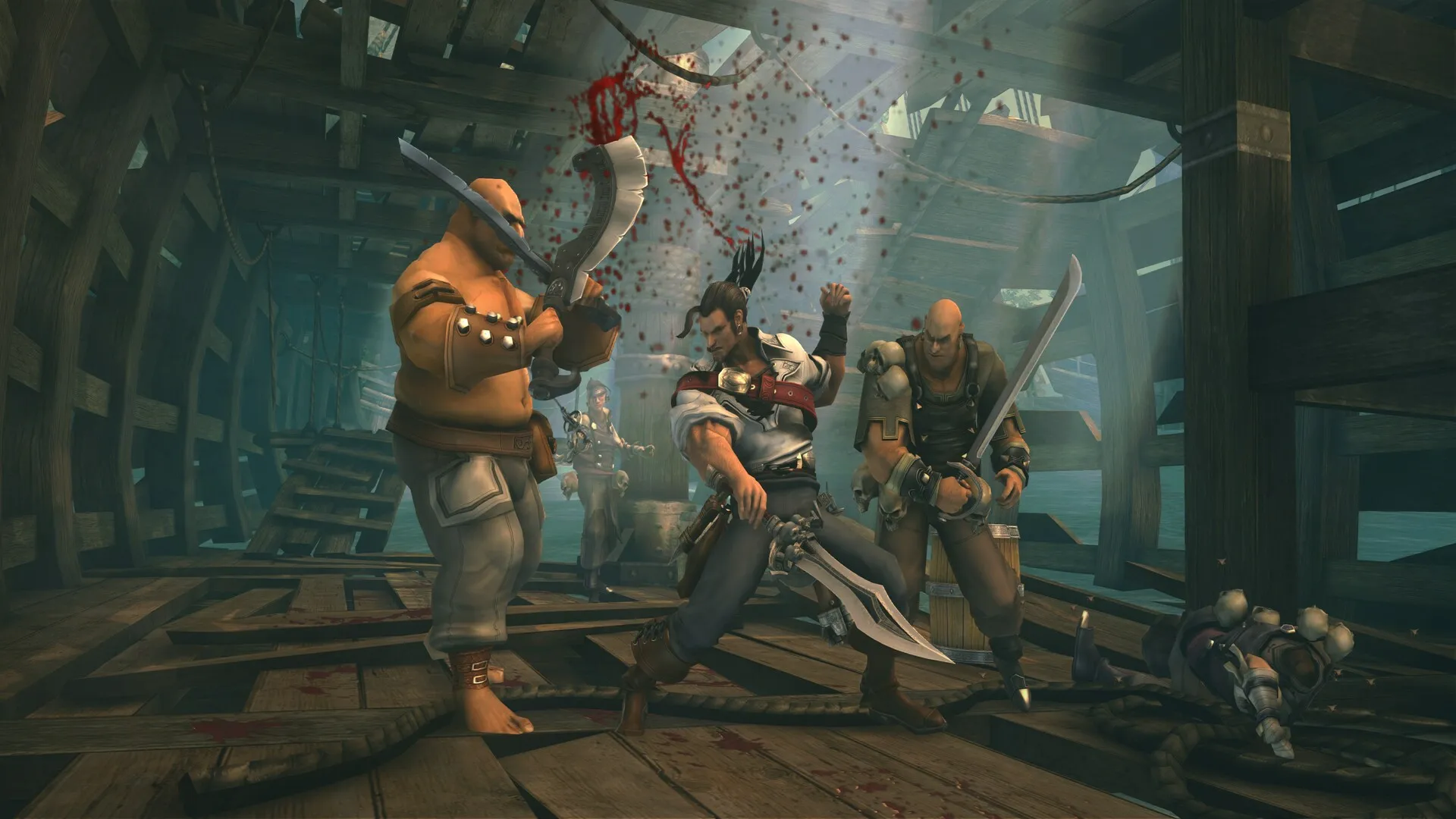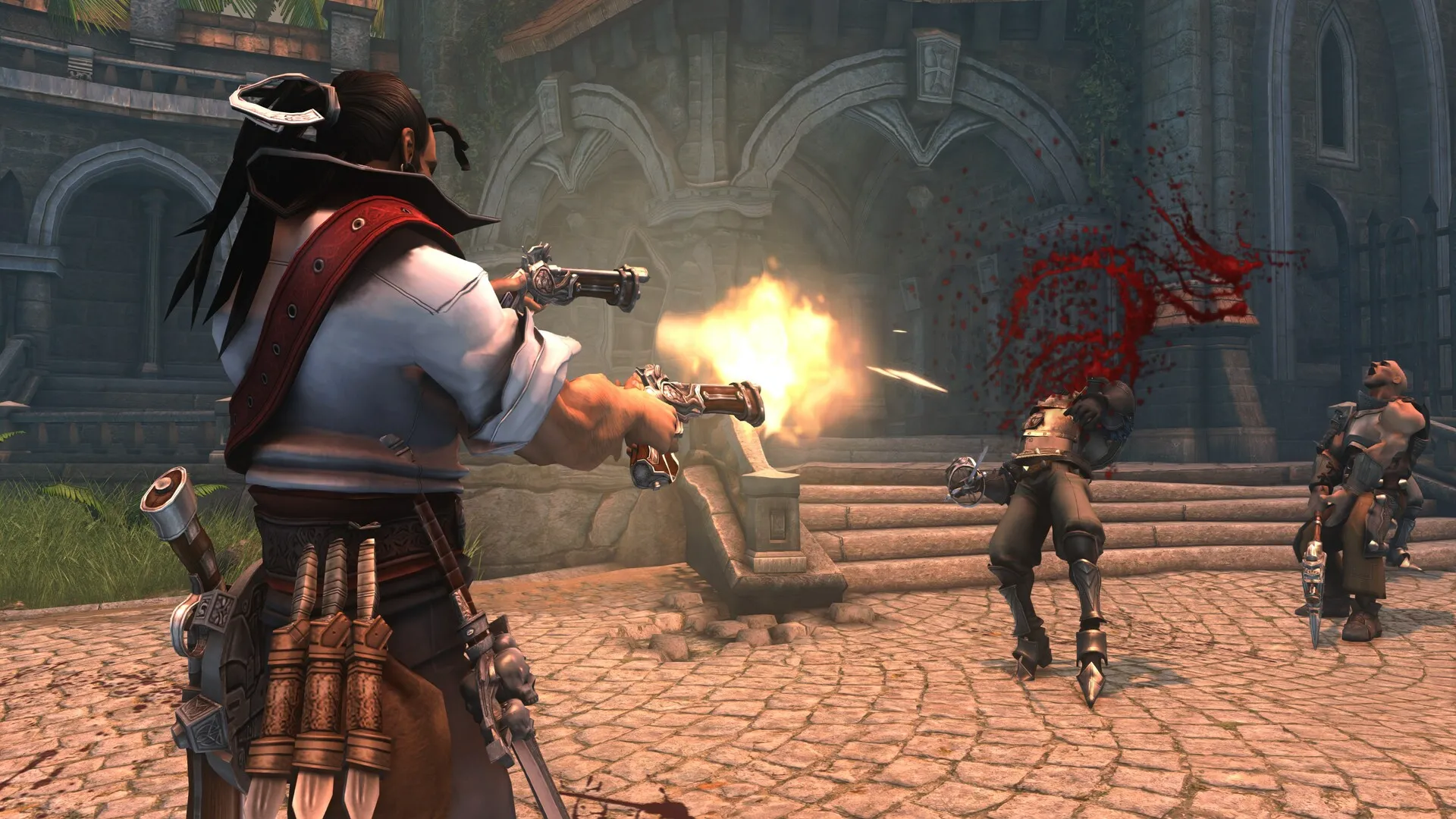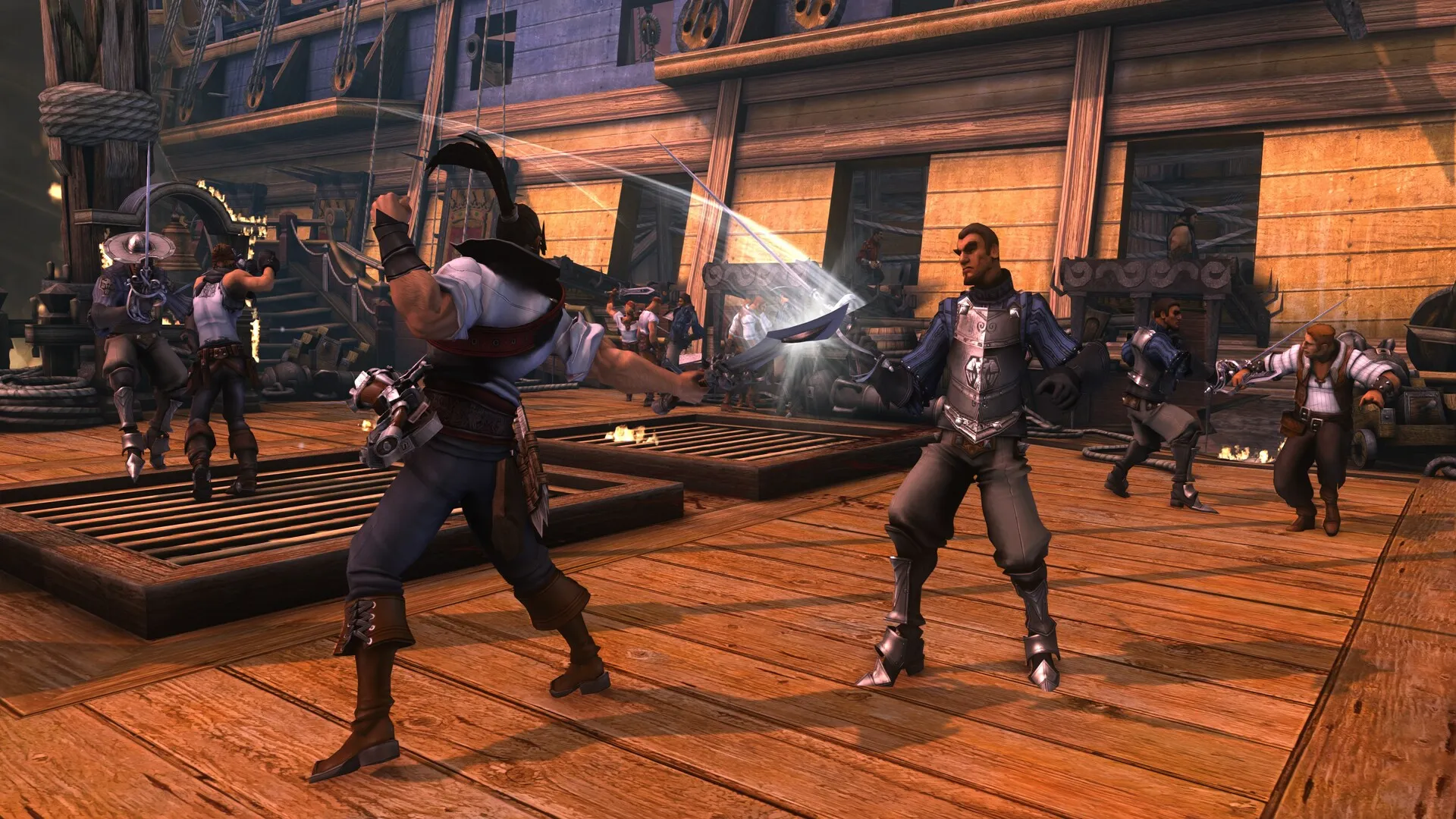Captain Blood’s reappearance in 2025 stages a dialogue between Western action tropes and Caribbean cultural echoes. Its narrative unfolds against 17th‑century colonial strife, yet the storytelling draws on broader seafaring myths shared across Europe, Africa and the Americas. Players chart Peter Blood’s quest for treasure under British commission, while the game’s environments—from sun‑drenched ports to dense jungle hideouts—evoke landscapes shaped by centuries of maritime exchange.
Combat mechanics mirror this hybrid identity: light and heavy strikes nod to classical swordplay drama, whereas unlockable combos reflect contemporary expectations for player agency. When Blood mans a deck‑mounted cannon, the tempo shifts from visceral melee to steady rhythm, recalling coastal defense strategies once employed on real Caribbean fortresses. Musical cues channel cinematic pirate anthems yet introduce percussion patterns suggestive of island rhythms, weaving a subtle auditory bridge between continents.
At moments, narrative beats and button‑mash encounters clash—such as boss puzzles that interrupt combat’s fluidity—highlighting tensions between story pacing and action design. This interplay invites reflection on how regional histories inform gameplay structure, leaving open questions about authenticity and the global resonance of revived classics.
Tides of Allegiance and Ambition
Captain Blood unfolds against the tumult of 17th‑century Caribbean skirmishes, where British privateers clash with the Spanish empire over trade routes and colonial holdings. The game’s levels range from sun‑bleached port towns—evoking the gritty realism of Latin American historical dramas—to dense jungle encampments reminiscent of African diaspora narratives in global cinema. Naval engagements aboard enemy vessels recall documentary‑style battle sequences, tying gameplay maps to real maritime tactics once deployed in Caribbean forts.
At its center stands Captain Peter Blood, whose drive for riches eclipses patriotic fervor. He embodies the antihero tradition found in world cinema—from Yakuza thrillers in Japan to Nollywood’s morally fluid protagonists—yet his motivations translate directly into mechanics: gold unlocks new combos, linking narrative goals to player progression. Blood’s arc shifts when personal gain collides with loyalty tests, underscoring how cultural values of honor and self‑interest intersect in interactive form.
Supporting figures anchor this cross‑cultural tapestry. Loyal crewmembers channel Caribbean oral histories of camaraderie, while Lord Langford’s rescue mission draws on European chivalric tropes. Villains range from rival pirate captains—echoing Spanish Golden Age caricatures—to imperial officers whose stern commands mirror Latin American revolutionary portrayals. Female roles remain sparse and archetypal, a reflection of legacy storytelling practices that merit reevaluation through modern lenses.
Narrative advances through mission objectives that mirror chaptered screenwriting: clear goals punctuated by boss encounters serving as climactic set‑pieces. Yet stilted cutscenes and uneven audio mixing can fracture immersion, highlighting friction between cinematic ambition and dated technical execution.
Themes of freedom versus duty ripple beneath the surface, as treasure hunts morph into tests of betrayal and trust. Hints of tongue‑in‑cheek humor weave through the stern drama, inviting players to consider how piracy’s mythos adapts when cast in a global interactive medium rather than a single national tradition.
Crossroads of Blade and Trigger
Captain Blood’s combat roots itself in a classic hack‑and‑slash framework, pairing light and heavy strikes in ways that echo both European swordplay manuals and the swift machete techniques of Caribbean folklore. Each attack type carries its own rhythm, inviting players to chain basic swings into increasingly elaborate combos—unlocked through in‑game gold—that mirror how colonial economies once traded currency for power.
The arsenal spans familiar melee staples and curious oddities. A cutlass delivers brisk slashes, while a two‑handed sword offers broader arcs, and that so‑called “hatchet” reveals itself as a hefty blade—a mismatch that hints at production quirks rather than narrative intent. Ranged options include a rechargeable pistol, a classic musket for stagger shots, and grenades that break mob walls. These pickups, fleeting in duration, create moments where players juggle close‑quarters drama with sudden stand‑off duels.
Enemy encounters range from waves of cannon‑fodder grunts to specialized gunner units and armored brutes whose stagger windows reward precise timing. High spawn densities trigger stun‑lock frustrations familiar to arcade‑style beat‑’em‑ups, yet mini‑bosses punctuate the flow with set‑piece challenges that shift pace and sightlines.
Special moves and unblockable strikes add a layer of tactical depth, rewarding players who invest in particular unlocks—so much so that a trophy awaits those who conquer a level with a single combo. This design invites comparisons to rhythm‑based action titles from East Asia, where mastering one signature sequence can carry a stage.
Boss stages often blend environmental puzzles—pull levers to expose weak points or avoid rolling hazards—with quick‑time events that tap into early 2000s interactive cinema trends. These segments can interrupt combat’s momentum, raising questions about how narrative staging and mechanical loops should align.
At its core, Captain Blood’s tactile encounters hinge on button‑mashing gratification offset by periodic bursts of strategy. Hits sometimes feel weightless by modern standards, yet the raw immediacy recalls arcade cabinets where feedback was king. This tension between ritualized combo patterns and the yearning for authentic impact points toward a larger question: how does one balance homage to past action legends with the expectations of a global audience seeking both tradition and innovation?
Cannon Fire and Combat Continuity
When Captain Blood shifts from boarding skirmishes to fixed‑position cannon stations, the game channels naval defense tactics once employed in Caribbean colonial forts. Targeting enemy hulls unfolds like a historical reenactment, each reload cycle evoking the rhythm of 17th‑century artillery crews. Cooldown mechanics mirror period‑accurate heat control on bronze barrels, weaving authenticity into what could have been a simple shooting gallery.
Boarding sequences bridge ship and land combat, demanding players defend narrow deck corridors against waves of invaders. Melee continuity remains intact as Blood swings his cutlass between cannon volleys, creating a fluid hand‑off that recalls cinematic storming scenes in global pirate films. The transition can feel abrupt—one moment you’re picking off cannon fodder at range, the next you’re back in chaotic sword clashes—but that tension reflects the sudden tides of naval warfare.
Minigames introduce quick‑time events for emergency repairs or ammunition hauling, nodding to early interactive cinema while highlighting the era’s design contrasts. Their timed prompts inject brief puzzle‑like breaks, yet they can stall the hack‑and‑slash momentum when pacing calls for relentless action.
Each sinking mission carries high stakes: failed volleys risk crew casualties and narrative setbacks, while victorious salvos yield precious gold for combo unlocks. This balance of resource management and combat intensity underscores how secondary activities shape both gameplay flow and the colonial odyssey at the heart of Captain Blood.
Aesthetic Currents and Sonic Echoes
Captain Blood’s visual palette resurrects a mid‑2000s tonal range at modern resolutions, conjuring nostalgia for Xbox 360 and PS2 era adventures. Character models display deliberate “chunkiness,” their rubbery animations echoing early Japanese arcade titles that prized exaggerated movement as visual shorthand.
Environments shift from moss‑clad Caribbean forts—reminiscent of Cuban colonial architecture—to dense tropical isles where sunlight filters through palms in ways that recall Southeast Asian game landscapes. Ship interiors, decked with timber beams and iron fittings, ground the pirate fantasy in material reality, even as occasional texture pop‑ins betray the age of the original assets. That nostalgic sheen invites comparison to early Western pirate films, where atmosphere held greater weight than hyperreal fidelity.
Animation quality varies between sections. In combat, Blood’s sword swings and execution flourishes flow with the rhythmic momentum of stage‑combat choreography seen in swashbuckling films from Shanghai to Hollywood. Cutscenes, however, can freeze into stiffness: facial gestures move in mechanical increments and head bobs lack the microexpressions common in recent motion‑capture techniques. This tension between combat dynamism and cutscene rigidity echoes challenges faced by early CGI film adaptations navigating narrative and technological limits.
The score channels orchestral pirate motifs, weaving brassy fanfares that mirror Zimmer‑inspired cinema while introducing percussive accents nodding to Caribbean drumming traditions. Journalistic accounts of period music note how leitmotifs can anchor a narrative arc—a technique Captain Blood replicates in peaks of battle sequences. Environmental audio—from crashing waves against hulls to distant gull calls—immerses players in a multinational maritime soundscape.
Voice lines often recede beneath effects and music, necessitating subtitles to catch key dialogue beats. Technical artifacts surface in subtitle timing misalignments and frame‑rate slow‑motion triggers under heavy load, underscoring the challenge of integrating legacy code with contemporary hardware. These interruptions blur the line between past and present, inviting players to question how cultural heritage and modern expectations can coexist in a revived classic.
Navigating Choppy Waters: Performance and Playability
On modern rigs, Captain Blood typically holds close to 60 fps, yet surges of on‑screen foes can plunge action into slow‑motion—an effect that recalls Hollywood’s dramatic slo‑mo but undermines combat rhythm. These random shifts challenge players expecting the steadier performance of recent global hits like Sekiro or God of War Ragnarök.
The absence of a lock‑on system forces manual targeting, a departure from Japanese action staples where auto‑lock guides every swing. Dodge rolls mapped to the right stick respond with variable latency, evoking the trial‑and‑error feel of early Resident Evil camera angles rather than the seamless fluidity of modern over‑the‑shoulder combat. Fixed viewpoints can obscure enemy approaches, reminding us how 2000s design prioritized cinematic framing over player control.
HUD elements—health bars, ammo counters and combo meters—sit cleanly at screen edges, avoiding visual clutter common in Western loot‑driven games. Inventory menus, however, demand multiple button presses to swap weapons or purchase upgrades, lacking the streamlined radial wheels seen in recent indie titles influenced by Scandinavian minimalism.
Subtitles prove essential when buried audio drowns dialogue; their font size and contrast align with best practices in accessibility journalism, yet no difficulty presets or remapping options ease this dated experience.
Glitches persist: vanished gold from botched refunds, desynced voice lines that skip critical plot cues. These flaws cast a light on how resurrecting a shelved title from one cultural era may collide with expectations shaped by two decades of global design evolution, prompting reflection on the balance between historical preservation and player comfort.
Treasures of Progression and Replay
Captain Blood’s economy channels the mercantile spirit of its colonial setting: gold plundered from Spanish galleons or found in hidden coves funds a web of combo upgrades. While the unlock tree’s standout skills draw parallels with action‑RPG traditions in Japan and Western indie scenes, some moves feel redundant once core unblockable attacks dominate combat. Early levels gently introduce mechanics borrowed from arcade beat‑’em‑ups, yet by mid‑game the surge of enemy mobs can overwhelm, echoing the unforgiving curves of classic arcade halls across Asia.
Campaign length hovers around ten hours for a first playthrough, stretching further when hunting hidden trophies invites speed‑run or single‑combo challenges. Pacing oscillates between brisk land assaults and measured ship battles, mirroring narrative rhythms found in global pirate cinema. Replay options deepen the experience: choosing to tackle missions as Walt—whose wrist‑blade flair evokes European swashbuckler films—or revisiting boss encounters with new tactics offers fresh perspectives on familiar encounters.
For players attuned to retro revival, Captain Blood delivers satisfying returns at full price; modern audiences more familiar with sprawling open worlds may prefer seasonal discounts. Does the value of resurrecting a shelved classic outweigh its design quirks in a market hungry for both novelty and heritage?
The Review
Captain Blood
Captain Blood resurfaces as a nostalgic relic, its mid‑2000s aesthetic and straightforward hack‑and‑slash combat offering moments of genuine thrill amid janky animations and uneven audio. Ship battles and unlockable combos inject variety, yet frequent slow‑motion hitches and stun‑locking crowds temper the fun. Its historic setting and cross‑media nods spark curiosity, even as dated mechanics reveal why action games evolved beyond corridor‑bound designs. For enthusiasts of retro pirate adventures, it delivers charm; for those seeking modern polish, it may feel stranded.
PROS
- Evocative mid‑2000s visuals that trigger nostalgia
- Immediate hack‑and‑slash combat with satisfying combo unlocks
- Ship‑battle segments add variety to land‑based melee
- Resource‑driven upgrade system links story goals to gameplay
- Rich Caribbean setting supported by a cinematic score
CONS
- Performance dips and random slow‑motion disrupt combat flow
- Audio mixing forces constant reliance on subtitles
- Enemy variety is limited, leading to repetitive encounters
- Fixed camera angles and no lock‑on hamper targeting









































